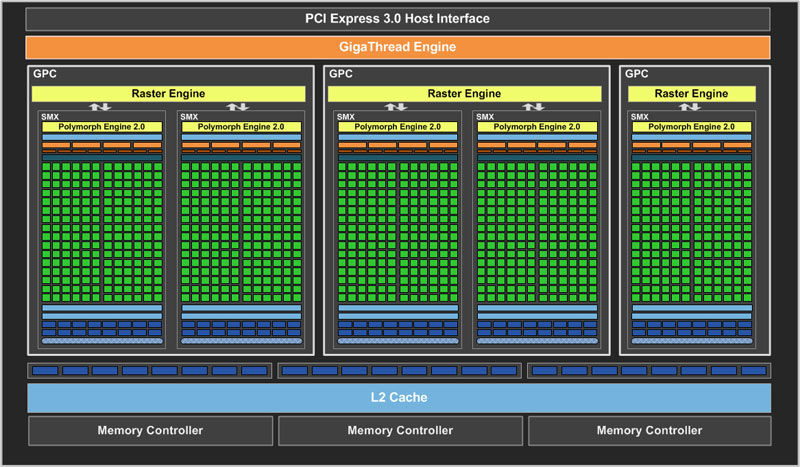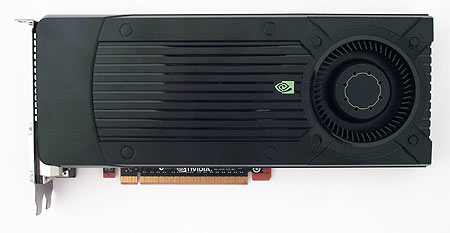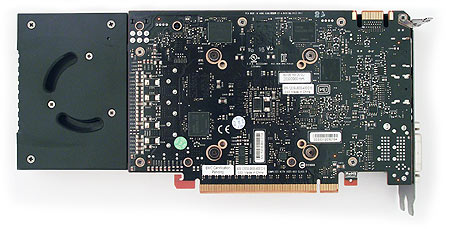Nvidia GeForce GTX 650 And 660 Review: Kepler At $110 And $230
We have two new graphics cards in the lab today: Nvidia's GeForce GTX 650 and 660, filling the gap between its GeForce GT 640 and GTX 660 Ti with Kepler derivatives. Are these GK107- and GK106-based boards able to challenge the Radeon HD 7750 and 7850?
GeForce GTX 660: Introducing GK106
Yesterday, there were five GeForce cards in the channel based on Nvidia's Kepler architecture. Four of them centered on the company's GK104 graphics processor. One, the GeForce GT 640, employs a derivative GPU called GK107. Now, we have a second board with GK107 as its foundation.
But the second card surfacing today features an all-new Kepler-based chip called GK106.
GK106 is composed of five SMX clusters, each with 192 CUDA cores totaling 960. Sixteen texture units per SMX give us a total of 80 across the GPU. And three ROP clusters able to process eight full-color pixels yield 24 per clock cycle. A trio of 64-bit memory controllers aggregate into a 192-bit memory interface.
Nvidia claims that its GK106 is a fully-utilized GPU, and that there aren't any disabled resources we might see flipped on later. We find this odd, given that one SMB cluster standing on its own to the side.
Like the GeForce GTX 660 Ti, the reference 660 includes 2 GB of memory. The only way Nvidia is able to achieve this using three 64-bit memory controllers is by mixing capacities. Also like the 660 Ti, the only way this amount of memory can be handled over a 192-bit bus is with mixed-density ICs. It works like this: the three 64-bit controllers divide the total memory into 512 MB chunks, which are accessed at the full 192 bits. The remaining 512 MB is addressed by just one 64-bit controller in a completely separate transaction. Nvidia won't divulge anything else about its implementation for competitive reasons, but there is undoubtedly latency there the controllers have to contend with.
This is something we drill down into using bandwidth-specific benchmarks, and you'll want to keep it in mind in games where that extra 512 MB is utilized.
| Header Cell - Column 0 | GeForce GTX 660 Ti | GeForce GTX 660 | GeForce GTX 570 | Radeon HD 7850 | Radeon HD 7870 |
|---|---|---|---|---|---|
| Shader Cores | 1344 | 960 | 480 | 1024 | 1280 |
| Texture Units | 112 | 80 | 60 | 64 | 80 |
| Color ROPs | 24 | 24 | 48 | 32 | 32 |
| Fabrication Process | 28 nm | 28 nm | 40 nm | 28 nm | 28 nm |
| Core (Shader)/Boost Clock | 915/980 MHz | 980/1033 MHz | 732 (1464) MHz | 860 MHz | 1000 MHz |
| Memory Clock | 1502 MHz GDDR5 | 1502 MHz GDDR5 | 950 MHz GDDR5 | 1200 MHz GDDR5 | 1200 MHz GDDR5 |
| Memory Bus | 192-bit | 192-bit | 320-bit | 256-bit | 256-bit |
| Memory Bandwidth | 144.2 GB/s | 144.2 GB/s | 152 GB/s | 153.6 GB/s | 153.6 GB/s |
| Graphics RAM | 2 GB GDDR5 | 2 GB GDDR5 | 1.25 GB GDDR5 | 2 GB GDDR5 | 2 GB GDDR5 |
| Power Connectors | 2 x 6-pin | 1 x 6-pin | 2 x 6-pin | 1 x 6-pin | 2 x 6-pin |
| Maximum Thermal Design Power | 150 W | 140 W | 219 W | 130 W | 175 W |
| Price | $300-$340(Newegg) | $230(MSRP) | $240-$330(Newegg) | $200-$245(Newegg) | $260-$370(Newegg) |
Given identical memory specifications, the GeForce GTX 660 Ti and 660 offer the same 144.2 GB/s of memory bandwidth. Most of the 660's other specs are less aggressive, though: CUDA cores, texture units, and ROPs are cut by roughly 30% in comparison. Nvidia helps overcome some of the impact of fewer resources by juicing the core and average GPU Boost frequencies, though.
Get Tom's Hardware's best news and in-depth reviews, straight to your inbox.
Reference GeForce GTX 660
At first glance, Nvidia's reference GeForce GTX 660 reminds us of a GeForce GTX 460 or even the Radeon HD 7850. But then we turn it over...
...and the PCB only covers about 75% of the card's length. The overhang comes from the fan and shroud, suggesting that vendors can make much smaller versions of the GeForce GTX 660, providing they're able to address cooling effectively. Zotac sent us a sample of its card proving this is a feasible endeavor.
Again, Nvidia's reference card comes with 2 GB of GDDR5 at 1502 MHz. Its base core clock is 980 MHz, while GPU Boost averages 1033 MHz.
The reference GeForce GTX 660 exposes two dual-link DVI ports, calls for two DL-DVI, one HDMI port, and a DisplayPort output. This matches the GeForce GTX 660 Ti, and both cards support up to four monitors operating concurrently with three in Surround mode.
Nvidia's reference PCB measures 7" x 4.5", which is fairly small for a performance/mainstream card. One six-pin auxiliary power connector supplements the PCI Express slot's 75 W delivery, satisfying a TDP that stretches up to 140 W. A single SLI connector is tell-tale: the GeForce GTX 660 only supports dual-card configurations.
Current page: GeForce GTX 660: Introducing GK106
Prev Page GeForce GTX 650: Filling In The Gaps Next Page Gigabyte's GeForce GTX 660 (GV-N660OC-2GD)Don Woligroski was a former senior hardware editor for Tom's Hardware. He has covered a wide range of PC hardware topics, including CPUs, GPUs, system building, and emerging technologies.
-
EDVINASM Was waiting for GTX 650 to see if it can beat the old GTX 550 Ti but it seems other than power draw it's no match. Might as well keep my GPU until next NVidia lineup. GTX 660 on other hand is only €50 cheaper than GTX 660 Ti meaning its a no budget saver to buy non Ti version. Fail...Reply -
mikenygmail Buy a 7770 or 7870 instead.Reply
Wait for sales on whichever one is needed and then grab one -
AMD 7770 can be had for just over $100.
AMD 7870 can be had for about $220. -
lahawzel Goddamn Mike NY Gmail or whatever the hell your name is supposed to be, here, proper commenting etiquette:Reply
1. Read the article.
2. Understand what the article is talking about.
3. If you find an urge to comment about "______ sucks" or "_______ wins again", especially when the article says the opposite of what you want to post, chances are your comment will look dumb as hell when it's posted and earn you 20 downvotes. Therefore, don't post that goddamn poor excuse of a "comment". -
tomfreak How "nice" of u tomshardware. By only compared 7750/7770 vs 650 in high detail but not comparing 7750/7770 on the Ultra detail, then when u pull out a 460 SE/9800GT for benchmark, u are taking away 650(why?).Reply
Is it because 650 performance is too poor to show off on benchmark? It doesnt take a genius to figure out the huge diff between 6870 vs 650. 7770= 6850 speed. So I guess even the 7750/460SE are putting shame on 650 on those high quality detail? too shy to show off 460SE/9800GT up against 650?
I dare u put on a detailed benchmark with 650 up against 7770/7750/GTS450/550ti/460/9800GT/9800GTX on all condition. Not a selective benchmark. -
Why are there giant gaps in both lineups? AMD has the 7770 at $130 and 7850 at $230 -- nvidia has the 650 and 660 at similar price points -- ideally for my budget would be something in the $150-170 price range, but I either have to compromise or shell out more. It seems like an obvious market gap.Reply
-
mikenygmail LaHawzelGod damn Mike NYThanks for the attempted compliment, but call me Mike. I'm glad you've been paying attention.Reply
It was more of a joke than anything else to simply write "AMD wins again!" and it was actually pretty funny! I try to balance things out so that no one company is viewed too favorably.
For example, I recently bought an Nvidia GTX 460 1 GB 256 bit card for $70, new, with a 3 month warranty for a friend to upgrade his gaming computer. Unusual? Yes. Great deal? You better believe it! Of course, if an equivalent AMD card was available at a cheaper price, that's the one I would've bought.
Now, relax and try to control yourself. Refrain from the use of profanity in future posts. Thanks.
-
EzioAs Nice article to be honest. I'm really glad you tested the Radeon cards with the new driver compared to other review sites.Reply
I've got nothing else to say on the GTX650 but to just point out that it's a weak card.
On the other hand, the GTX660 is probably the only Kepler (besides the 670) that impresses me. I don't know about everyone else though. To point out one thing, most Radeon 7870s can be found at $240 or lower without MIR. The GTX660 is priced well for a release MSRP and makes the 660ti offers less value, kind of like the 670 vs 680. For 8xMSAA, the performance does cripple but I think at this price point, most people are going to stay with 4xAA or possibly lower. -
mikenygmail EzioAsNice article to be honest. I'm really glad you tested the Radeon cards with the new driver compared to other review sites.I've got nothing else to say on the GTX650 but to just point out that it's a weak card.On the other hand, the GTX660 is probably the only Kepler (besides the 670) that impresses me. I don't know about everyone else though. To point out one thing, most Radeon 7870s can be found at $240 or lower without MIR. It's priced well for a release MSRP and makes the 660ti offers less value, kind of like the 670 vs 680. For 8xMSAA, the performance does cripple but I think at this price point, most people are going to stay with 4xAA or possibly lower.Reply
Exactly - Savvy TH readers will wait for sales on whichever one is needed and then grab one!
AMD 7770 can be had for just over $100 on sale.
AMD 7870 can be had for about $220 on sale.




